A True Love Story (Believe It or Not)
- Sam Roller

- Nov 8, 2019
- 5 min read
Updated: Dec 6, 2019
A fashion house like Maison Margiela is now a domiciliary name. Their infamous use of alternative fabrics and materials put them on the map and ahead of their time, but my mans needed to start somewhere. Back in the 80’s Martin Margiela was Jean Paul Gautiers' assistant. He was extremely overqualified for the job, and had a clear consistent vision for his own fashion line, so after a few seasons he bossed up and left.
Martin Margiela Jean Paul Gautier
In 1988 Martin Margeila debuted his first collection focusing entirely on women’s wear, under the name MAISON MARGIELA. While this collection was nice, it coasted on the word of the famous Jean Paul Gautier, as Jean gassed his ex-assistant up to everyone he could. Our story does not start until the collection featured for spring-summer of 1990, where Martin would produce the most iconic fashion show of all time.
Traditionally, fashion shows during Paris Fashion Week, are held in the first arrondissement of Paris, located right in the heat of the city. Martin never hosted his shows there, and when it came to spring-summer 1990, he chose to hold his show in the 20th arrondissement of Paris. The location was not high fashion at all, and located in a run down neighborhood.
20th Arrondissement of Paris
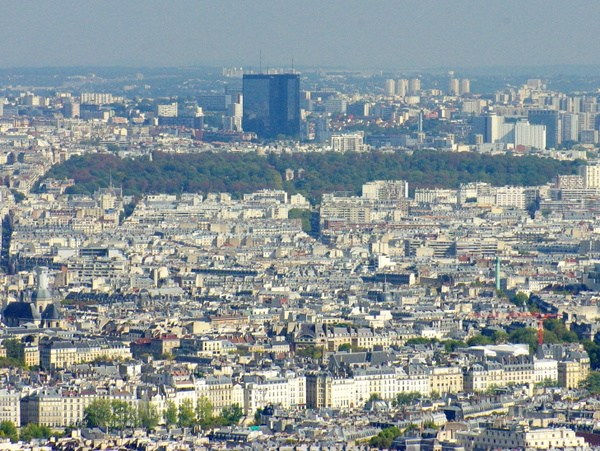
On some boonies type ish, Martin and his crew booked it out to the 20th arrondissement looking for a location to host the show. The crew got lost and found themselves on a playground with some little kids. The kids ran up on Martin trying to kick him off their turf, but Martin, poised and proper as always, explained the situation and corralled the kids to help him out.
So there, in the middle of a rundown neighborhood, miles from the bustling center of high-fashion, Martin Margiela is being shown around by a group of elementary school boys. After perusing around, they end up deciding to host the show under a tent located on a playground near the kids’ school
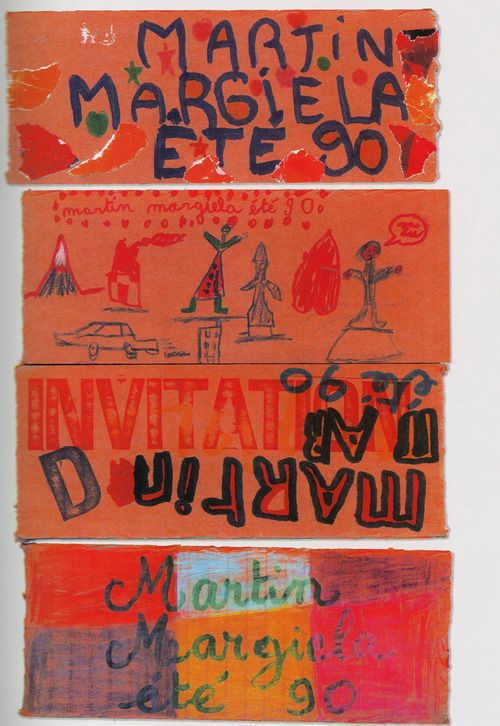
Martin continued to develop the most poetic relationship with these kids. He spoke with their school teachers and asked to have the kids create 500 unique fashion show invitations for the guests. So after months of work the kids produced an entire collection of absolutely gorgeous homemade invitations.
Martin mailed the invitations and a map with directions to the controversial location, to the 500 invitees. The recipients were confused and bewildered. First at the non-conventional invitations, but also at the bedraggled location. Still inspired by the word of Jean Paul Gautier and FOMO, people booked it out to see the show.
The presentation of the fashion show followed the clear cut direction of being uniquely provocative in the high-fashion scene. Model’s were unorthodoxly styled and directed. Make up was messy and unprofessional, as to give the impression that it was homemade. Lipstick was smeared over mouths, and eyeshadow blotched over lids. Martin continued to express this idea with the direction of the hair as well. Models’ hair was intentionally messy, and at one point Martin even ripped out a model’s extensions ripped and dragged on the ground to exaggerate the bedraggled homespun look.
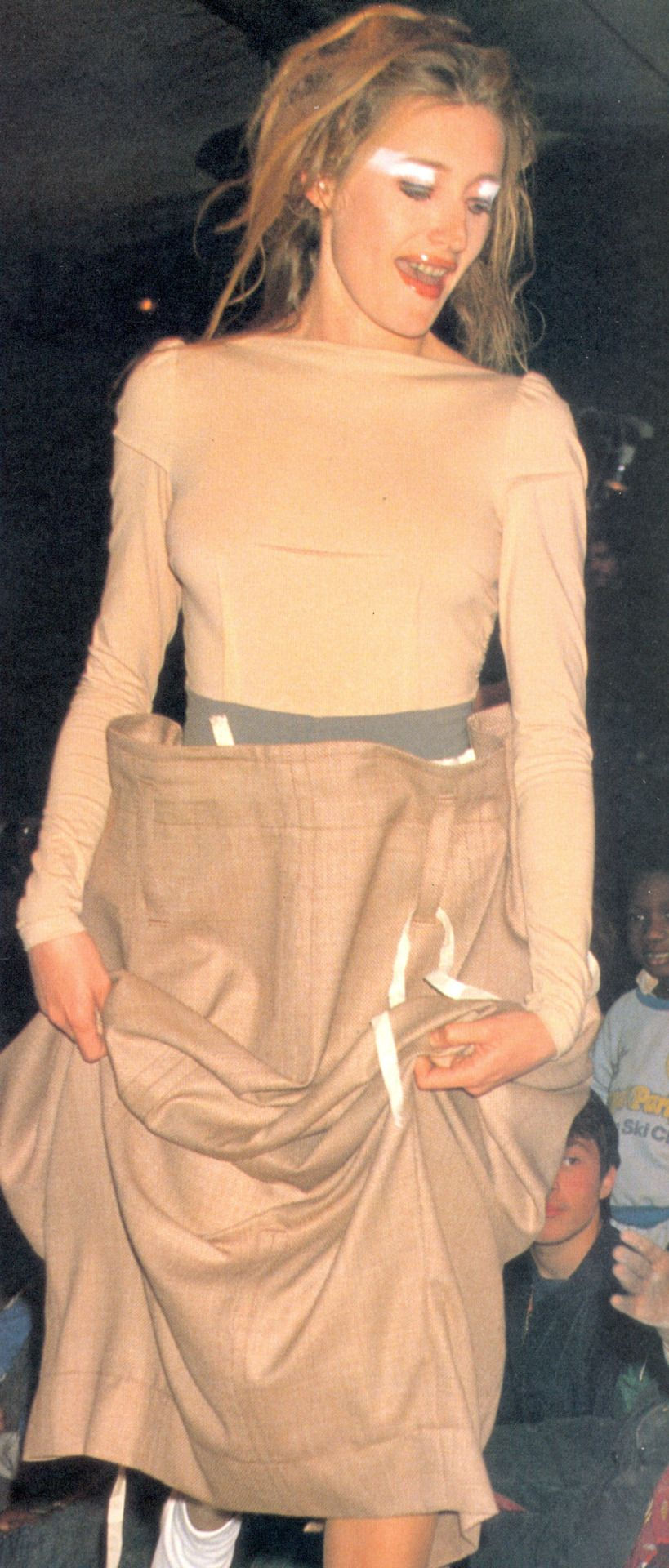
The models were also told to keep their pace and stature on the runway unprofessional. The walkway was made of sand, so those in heels were instructed to keep their movements natural and amateur.
Leading up to the show Marigiela’s team was frantic. They did not have enough outlets for their equipment, so they ended up literally going door to door in the small neighborhood asking people to plug in extension cables and hair dryers. People kindly helped them, and slowly the residents of the neighborhood gathered along with the fashion elite in curiosity to see the presentation Margiela had crafted.
On the day of the show, an unexpected crowd all packed onto a playground, protected by a small tent, in the 20th arrondissement of Paris. Martin, staying consistent with his goal of involving the kids, asked the invitees to sit down in their chairs, as he filed the kids into front row seats, and even on the ground of the runway itself.
This crafted the most incredible images a fashion show could ever produce. Here we have a class of kids from a small poor town, now front and center for a presentation showcasing clothes coveted by the richest and most influential people in the world. The kids had never seen a fashion show in their entire lives, and the seats saved for the biggest names in fashion had just been given up for them.
Martin Margiela showed the kids the ultimate level of respect. He was hosting his show on their playground, so he wanted them to be involved in the experience. As the models walked down the runway, the kids would spring out of their seats to walk with the models, hold their hands, and even dance. At one point, one of the kids was hoisted onto a model’s shoulders to be walked down with her.
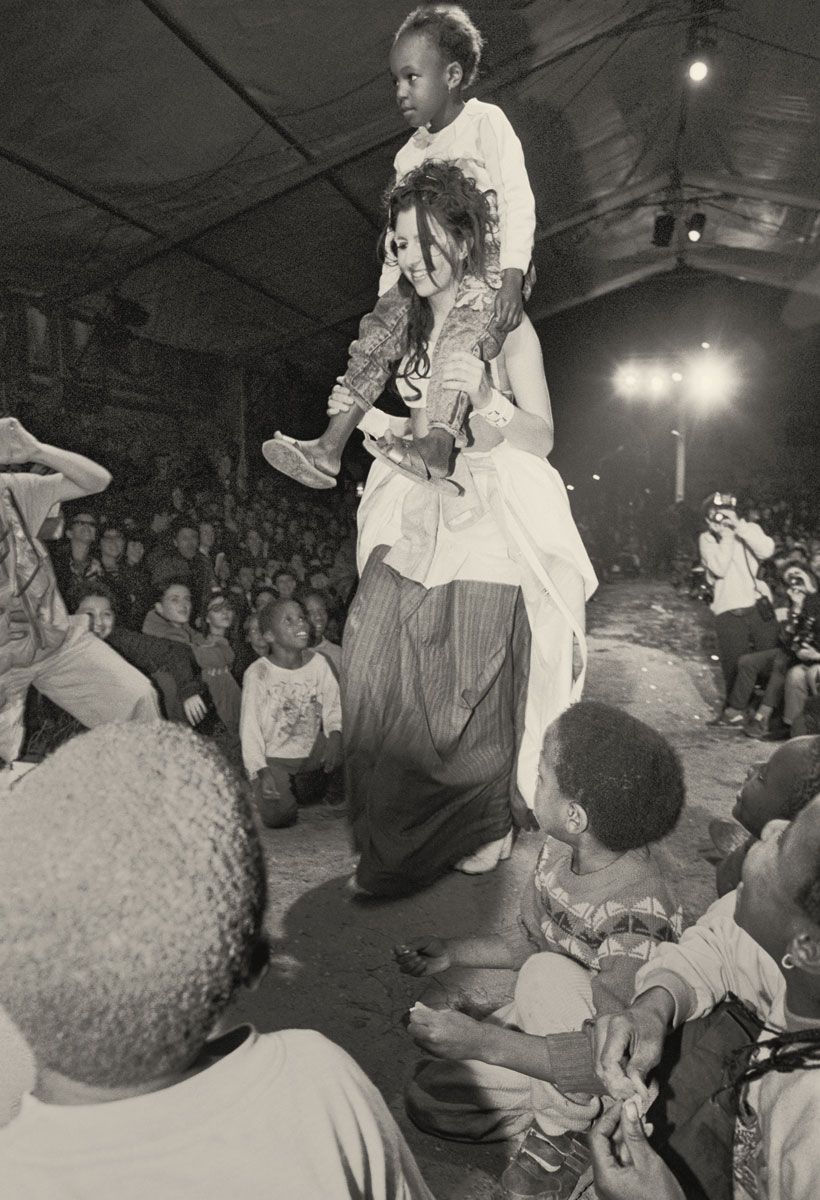
The show went flawlessly, and many Margiela house staples even debuted in this show. The Tabi boots were introduced, along with see through couture pieces, and a paper mache breastplate, being Margiela’s first piece to be featured in a magazine.
Tabi Boots . Clear Couture Mache Breastplate
At the end of the show, the models, in Margiela fashion, changed into the white fits worn by the design team and walked down the runway one last time. As the models walked the runway for the last time, all of the kids jumped up and began to dance on the runway as the models passed by.
This is absolutely one of the most iconic fashion shows of all time, and it encapsulates everything I love about Margiela. He absolutely disregarded the normalities of high-fashion set by the pretentious editors and critics, and chose to hold a wholesome intimate show. Most reviews of the show tore it to shreds. Critics complained about the location and the unprofessionality of the event, absolutely missing the beauty in how personal the show was.
This show would go on to influence many designers over the years, most notably, and on record, Raf Simons, saying: “I was so struck by everything I was seeing the I wanted to cry, I felt so embarrassed, I was like ‘oh god look at the ground, look at the ground, everyone’s gonna see your crying, like how stupid to be crying at a fashion show.’ Then I looked around, and half the audience was crying.”
Audience Crying
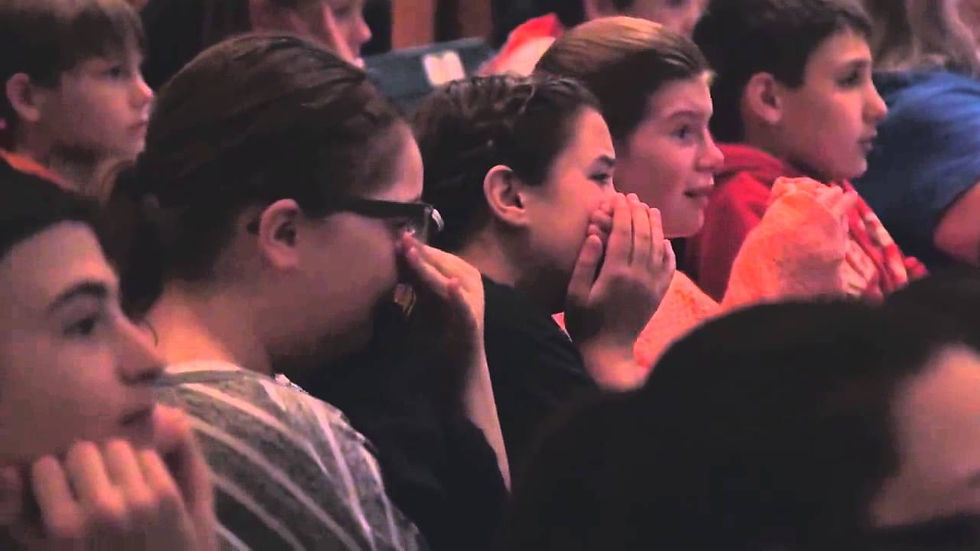
Maison Margiela spring-summer 1990 was Raf Simons’ first fashion show, and it independently inspired him to pursue the art. At this point all I can say, is that this show was fucking poetry.
I do not understand how such a beautiful story line could ever exist, and on top of everything be so absolutely Margiela. Fashion enthusiast Bliss Foster put it perfectly, saying “Maison Margiela democratized fashion.” Margiela has never bent the knee to fashion normalities. Martin held his show on a playground, in the middle of the boonies, with kids sitting front row. He put the kids time and experience above of all the editors and high profile names that were there. He had his models walk down the runway in an unprofessional manner, wearing non-conventional clothes, with messy hair and make-up. He made fashion more human and relatable than it had ever been before, just with a single show.
And on that note, I know we haven’t been dating for that long,
But,
Will you,
Martin Margiela,
Marry me?
XOXO
Sam Roller
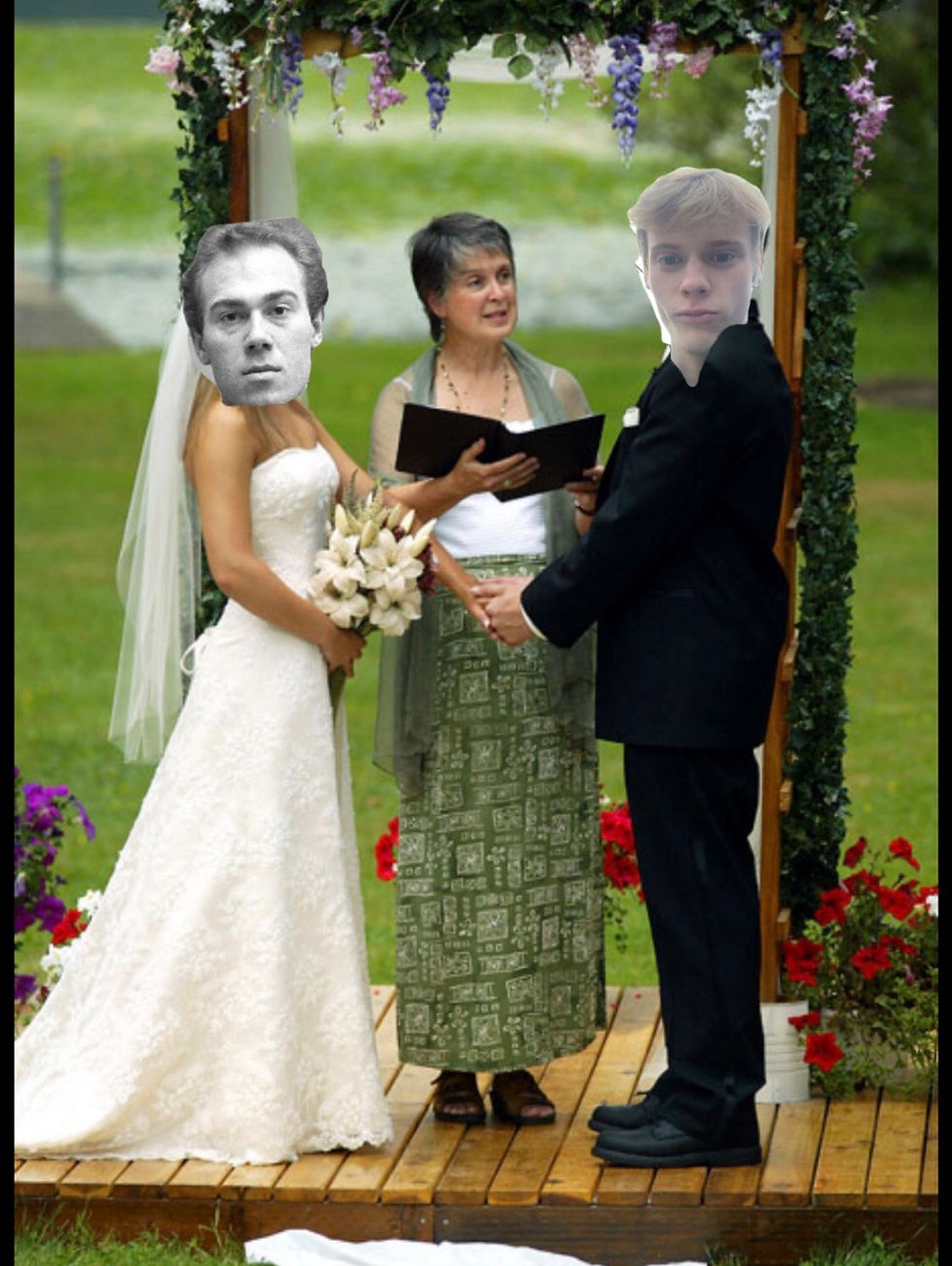
_edited.jpg)









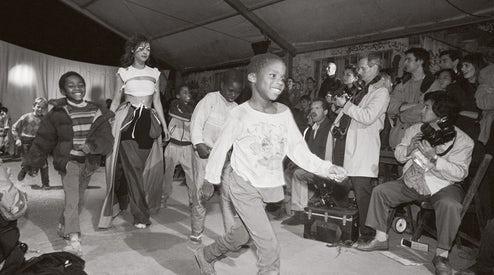











Comments